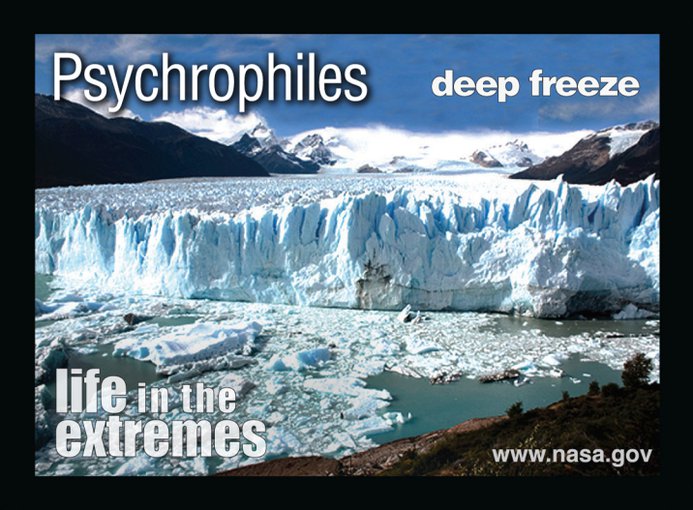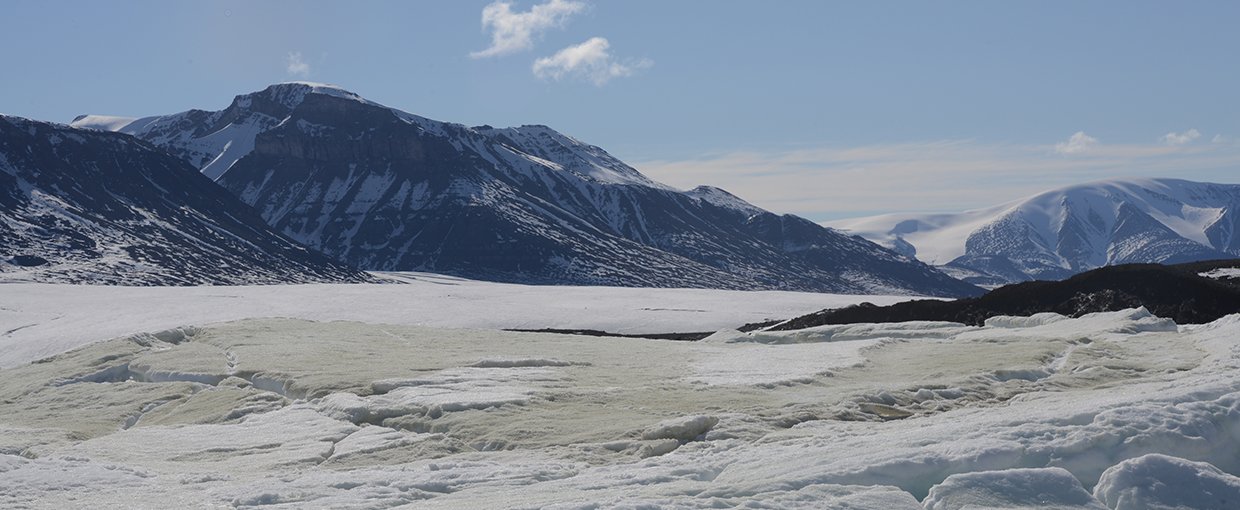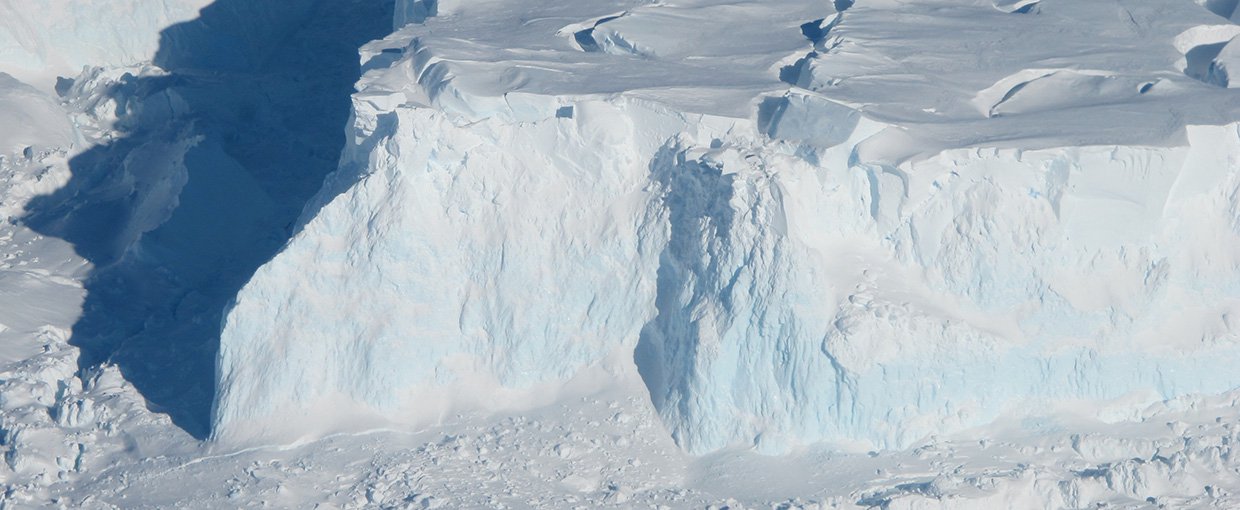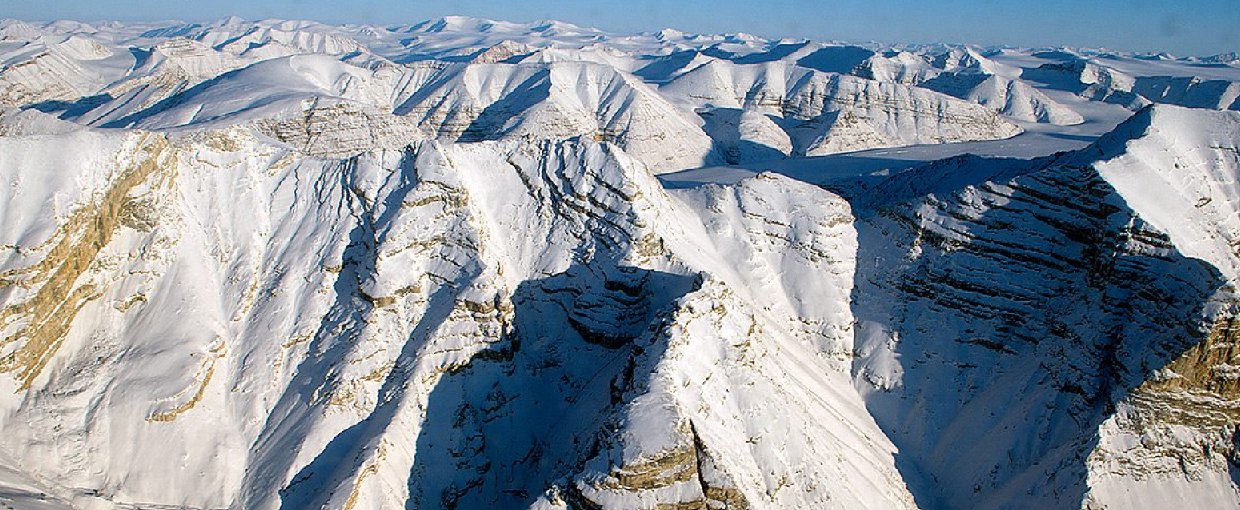
Imagine an environment where the “sky” above is frozen solid, it’s a massive block of ice that presses you down into the bedrock with immense force. Your home is perpetually dark, it’s brutally cold, and access to liquid water is limited. You’re trapped beneath a glacier, isolated from the outside world.
Many scientists once thought that subglacial environments would be virtually devoid of biological processes. Glaciers are powerful, colossal masses of ice that advance and retreat over the land. These frozen behemoths crush rock, shape mountains, and excavate deep crevasses as they scour the Earth’s surface. It was thought that the activity happening beneath glaciers would be limited to physical and chemical processes because, at first glance, the environment doesn’t seem conducive to life.
That view has changed with advances in technology that have allowed scientists to access and assess subglacial environments to see what is really going on. We now know that microorganisms play an important role in rock weathering and carbon cycling in subglacial environments, and that ecological niches exist in which entire microbial ecosystems can function (1).
Glaciers on Canada’s Ellesmere Island seen during the Apr. 1 IceBridge survey flight. NASA's Operation IceBridge uses sophisticated instruments on aircraft for measuring snow depth, ice elevation and thickness, surface temperature, bed topography and other characteristics of sea ice, ice sheets and glaciers.Image credit: NASA / Michael Studinger.
Chilling Out with Psychrophiles
Life as we know it needs liquid water to survive. However, in cold environments water freezes into ice crystals that damage cells and biological functions slow and eventually cease. So how cold can life go? And could life ever live in ice?
Access to liquid water is one major factor that shapes the microbial communities in subglacial environments. Of course, glaciers literally have tons of water… but it is mostly frozen. However, there are some unique factors that can lead to liquid water being present, even when temperatures are below the freezing point for H2O.
Some glaciers on Earth are known as polythermal (meaning multiple temperatures exist in the ice). These glaciers have very cold ice at the surface, margins, and terminus (where the glacier ends – also called the ‘snout’). However, the core zone at the base of the glacier (or the glacier bed) is ‘warm’ enough to melt. This is because the glacier moves by sliding across bedrock, rock, and gravel and this causes friction. Additionally, the ice at the glacier is at such high pressure that the freezing point for water is lowered. At a pressure of 1 standard atmosphere unit (atm) water freezes below 0°C. However, at 100 atm the freezing point is roughly -0.8°C. Melted ice means liquid water, and an opportunity for life.
Even with liquid water, organisms that live in these cold environments need to be able to survive at extremely cold temperatures and some of them even require the cold to live. These organisms are known as psychrophiles (Greek for “cold loving”), and they can grow and reproduce in temperatures as low as -20°C (-4°F).

Psychrophiles survive in some of Earth's coldest environments. Check out the set of trading cards featuring nine different extremophile groups at: https://astrobiology.nasa.gov/classroom-materials/tradingcards/Image credit: NASA Astrobiology.
Growing a Community
Today, scientists have found microbes beneath glaciers high on mountain tops or in the Earth’s polar regions (2, 3), and in samples from the ice cover on perennial and permanently frozen lakes (4, 5). At first, scientists thought these microbes might simply be preserved in the ice and not biologically active. However, microorganisms play a major role in carbon cycling on Earth and when looking at carbon cycling in subglacial environments, scientists became curious about whether microbes were important for these processes in freezing environments as well.
When researchers on Ellesmere Island in Canada’s Nunavut territory took samples from a glacier in the late 1990s, they discovered entire communities of microbes (6). The communities included psychrophiles that could grow in the presence of oxygen (aerobic) or the absence of oxygen (anaerobic).
Microbial communities in subglacial environments are physically isolated, and their access to important nutrients is limited to what they can find in the bedrock that the glacier interacts with. As a glacier crunches and tears away at the bedrock, the ice becomes filled with particles of material. Sometime, this material contains minerals that specific types of microbes can use for energy.
Bleeding from the Ice
One method that scientists have used to access subglacial environments is by finding special locations where water seeps out of the ice. At the Taylor Glacier in the McMurdo Dry Valleys of Antarctica, an eruption of hypersaline, iron-rich brine (salty water) episodically drains out of the glacier. Because of its iron content, the liquid brine looks red when it emerges from the ice and interacts with the atmosphere – inspiring the dramatic name of ‘Blood Falls.’
Astrobiologists studying the composition of the brine revealed that it is similar to marine waters that have been cryogenically concentrated (7, 8). As the water freezes, salts and minerals are left behind. Those salts and minerals get more and more concentrated in the water that has yet to freeze. Eventually the liquid water becomes ‘hypersaline.’ The high salt concentration is another factor that helps to lower the freezing point of water and keep it liquid.
It appears that Blood Falls could be seawater from the Pliocene Epoch (around five million years ago). Back then, the Dry Valleys were fjords. As the landscape changed and glaciers formed, seawater became incorporated into them.
Scientist have also sampled brine from within the Taylor Glacier before it is discharged at Blood Falls, allowing them to collect samples before the brine interacts with the outside air. Using a melting probe known as IceMole, researchers were able to penetrate the glacier and cleanly sample brine from inside the glacier (englacial brine) (9).
"Blood Falls" in the McMurdo Dry Valleys of Antarctica features in Issue #5 of Astrobiology: The Story of our Search for Life in the Universe, available at: https://astrobiology.nasa.gov/resources/graphic-histories/Image credit: NASA Astrobiology.
Beyond Earth
Water exists in the form of ice on many locations in the Solar System, from icy moons to the craters of Pluto. Not all of these locations would be suitable for life as we know it, but studying the mechanisms that psychrophiles use to survive in extreme cold on Earth can help astrobiologists understand where we might look for habitable environments. Based on studies like the ones on Ellesmere Island, some astrobiologists have put forward theories that conditions similar to polythermal glaciers might exist beneath the northern polar ice cap on Mars (6). If such sub-ice environments exist on Mars, they would have the added benefit of being sheltered from harmful conditions at the planet’s surface, such as high levels of ultraviolet radiation. But there’s a lot more to learn about the polar regions of Mars before we could say whether or not they could support habitable niches for life.
Other bodies in the Solar System of interest include the icy moons of Jupiter and Saturn. Jupiter’s moon Europa and Saturn’s moon Enceladus are both thought to harbor oceans of liquid water beneath its icy shell. In Part II, we’ll learn about another type of subglacial environment that could have a lot to teach astrobiologists about the potential for life on these icy worlds.
Astrobiologist Graham Lau (right, University of Colorado at Boulder) ascends the toe of a sulfidic outcrop on Borup Fiord Pass glacier Canada's Ellesemere island. The outcrop provides a unique opportunity for sample collection. Alexis Templeton (left, UC Boulder) awaits the gooey, slick climb.Image credit: John Spear.
Life in the Extreme:
Life in the Extreme: Radiation
Life in the Extreme: Surviving Beneath a Glacier, Part I
Life in the Extreme: Surviving Beneath a Glacier, Part II
Life in the Extreme: Terrestrial Hot Springs
Life in the Extreme: Polar Deserts
Life in the Extreme: Hydrothermal Vents
Related:
Ask an Astrobiologist: Cool Life: Exploring the Habitability of Glacial Systems with Dr. Mark Skidmore
How Glacial Biomarkers can Hone the Search for Extraterrestrial Life
Expedition to Robertson Glacier
Icy Worlds and their Analog Sites
Novel Species of Bacteria Found Deep Within Greenland Glacier
References:
(1) Sharp, M., et al. (1999) Widespread bacterial population at glacier beds and their relationship to rock weathering and carbon cycling. Geology 27(2), 107–110.
(2) Karl, D. M., et al. (1999) Microorganisms in the accreted ice of Lake Vostok, Antarctica. Science 286, 2144–2147.
(3) Sharp, M., et al. (1999) Widespread bacterial populations at glacier beds and their relationship to rock weathering and carbon cycling. Geology 27, 107–110.
(4) Psenner, R., and B. Sattler, B. (1998) Life at the freezing point. Science 280: 2073–2074.
(5) Priscu, J.C., et al. (1998) Perennial Antarctic Lake Ice: An Oasis for Life in a Polar Desert. Science 280, 2095-2098.
(6) Skidmore, M., et al. (2000) Microbial Life beneath a High Arctic Glacier. Applied and Environmental Microbiology 66(8), 3214-3220.
(7) Lyons, W.B., et al. (2018) The Geochemistry of Englacial Brine From Taylor Glacier, Antarctica. JGR Biogeosciences 124(3), 633-648.
(8) Mikucki, J.A., Priscu, J.C. (2007) Bacterial Diversity Associated with Blood Falls, a Subglacial Outflow from the Taylor Glacier, Antarctica 73(12), 4029-4039.
(9) Dachwald, B., et al. (2017) IceMole: a maneuverable probe for clean in situ analysis and sampling of subsurface ice and subglacial aquatic ecosystems. Annals of Glaciology 55(65). 14-22.





